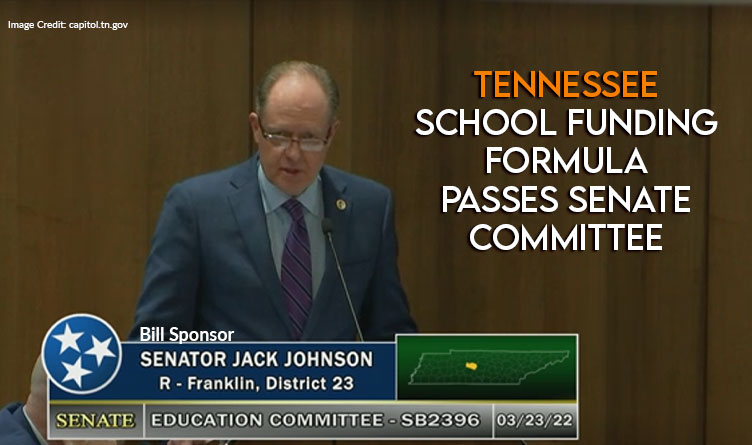Image Credit: capitol.tn.gov
The Center Square [By Jon Styf] –
The new proposed K-12 public school funding formula for Tennessee passed a Senate committee and House subcommittee this week, the first two votes taken on the new student-based plan.
The Senate Education Committee passed the Tennessee Investment in Student Achievement (TISA) by a 6-1 vote Wednesday, a day after the House K-12 Subcommittee passed the companion bill.
Both versions of the bill were passed with amendments attached, with each rolled into one amendment that altered the standard for what is defined as a fast-growing school district, added charter school funding as a direct fund rather than a student-based weight and increased literacy funding.
The Senate version also made TISA training voluntary and removed a stipulation that required a statewide committee of educators to be created.
Senate Bill 2396 will head to the Senate Finance, Ways and Means Committee. House Bill 2143 is headed to the House Education Administration Committee.
Sen. Joey Hensley, R-Hohenwald, was the lone senator to vote against the measure Wednesday.
“Eight weeks ago, I was concerned as well,” Sen. Jon Lundberg, R-Bristol, said. “… I think we put together a really sound bill.”
*** Click Here to Support Conservative Journalism in Tennessee. We can’t bring your articles like this without your support!***
Lundberg and Sen. Mike Bell, R-Riceville, cited a flood of emails each had received asking to give the bill more time before it is passed, asking to take it to summer study. Bell said he has not seen a sound reason to do that, so he assumes some would prefer to keep what he believes is a flawed Basic Education Program (BEP) funding formula that has been used in the state since 1992.
“Are we passing a perfect piece of legislation? No,” Bell said. “But it’s better and it’s moving the ball down the court.”
Education Commissioner Penny Schwinn again answered questions about the $6,860 base funding per student for the 2023-24 school year, when the new formula would begin, if passed and signed into law. Base funding accounts for $6.6 billion of the $9 billion in proposed overall TISA funding.
An additional $1.8 billion is allocated to weights, which are awarded for everything from special learning needs to living in an area of poverty or a rural setting.
Hensley asked whether TISA would incentivize school districts to find more students with learning disabilities, which could cost the state, but Schwinn said districts currently get extra funding for those students with extra learning needs in the BEP formula.
Schwinn also said the professionals making those assessments, the teachers and school principals, are generally removed from the direct district-wide budget process enough that they would not consider funding while making student evaluations.
“It really is based on the best interest of the student,” Schwinn said.
Schwinn said North Carolina was a good example of a state that moved from a district-based funding approach to a student-based approach and added transparency at the school building level of how funding is spent.

About the Author: Jon Styf, The Center Square Staff Reporter – Jon Styf is an award-winning editor and reporter who has worked in Illinois, Texas, Wisconsin, Florida and Michigan in local newsrooms over the past 20 years, working for Shaw Media, Hearst and several other companies. Follow Jon on Twitter @JonStyf.




